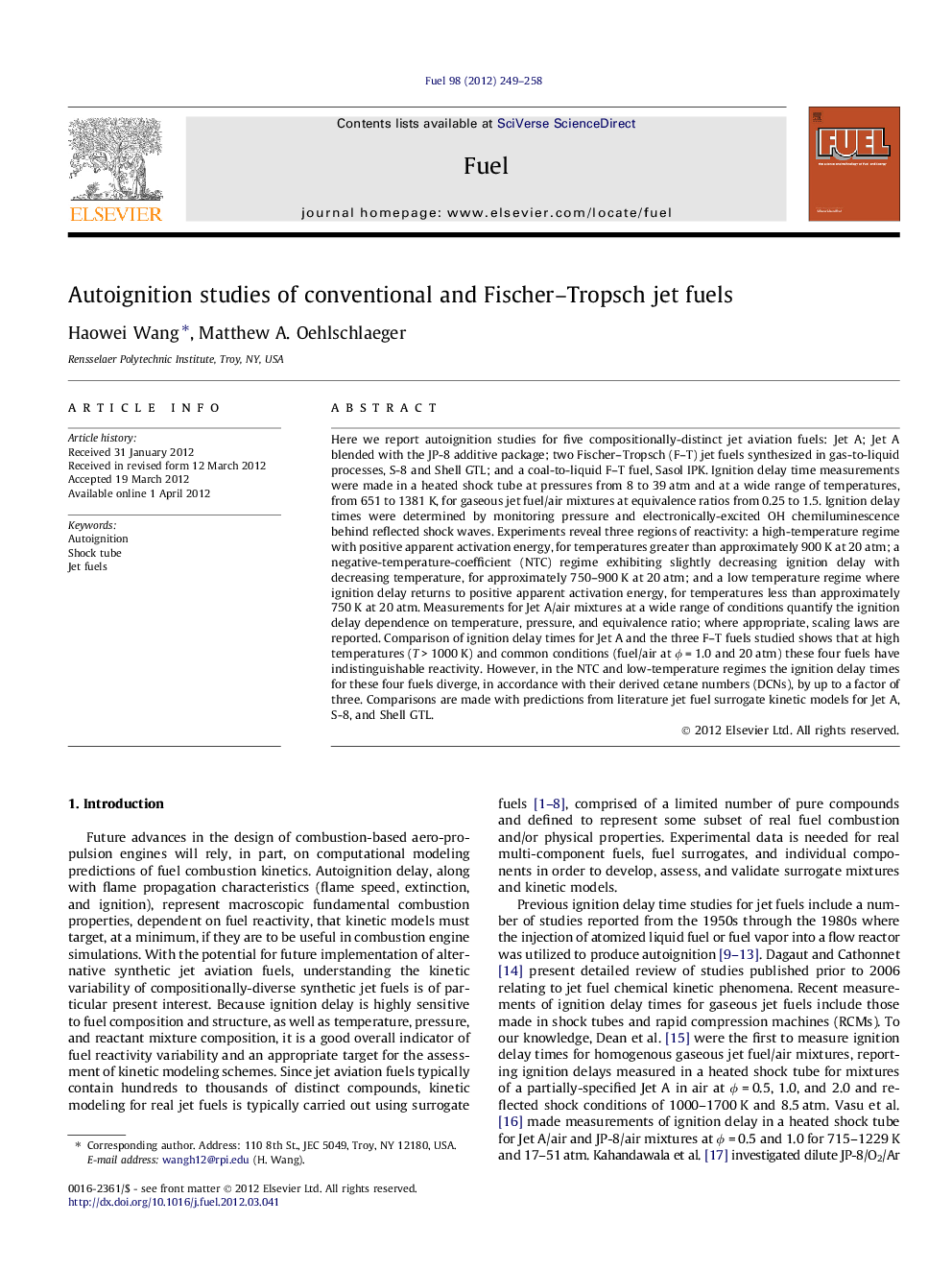| کد مقاله | کد نشریه | سال انتشار | مقاله انگلیسی | نسخه تمام متن |
|---|---|---|---|---|
| 206335 | 461168 | 2012 | 10 صفحه PDF | دانلود رایگان |

Here we report autoignition studies for five compositionally-distinct jet aviation fuels: Jet A; Jet A blended with the JP-8 additive package; two Fischer–Tropsch (F–T) jet fuels synthesized in gas-to-liquid processes, S-8 and Shell GTL; and a coal-to-liquid F–T fuel, Sasol IPK. Ignition delay time measurements were made in a heated shock tube at pressures from 8 to 39 atm and at a wide range of temperatures, from 651 to 1381 K, for gaseous jet fuel/air mixtures at equivalence ratios from 0.25 to 1.5. Ignition delay times were determined by monitoring pressure and electronically-excited OH chemiluminescence behind reflected shock waves. Experiments reveal three regions of reactivity: a high-temperature regime with positive apparent activation energy, for temperatures greater than approximately 900 K at 20 atm; a negative-temperature-coefficient (NTC) regime exhibiting slightly decreasing ignition delay with decreasing temperature, for approximately 750–900 K at 20 atm; and a low temperature regime where ignition delay returns to positive apparent activation energy, for temperatures less than approximately 750 K at 20 atm. Measurements for Jet A/air mixtures at a wide range of conditions quantify the ignition delay dependence on temperature, pressure, and equivalence ratio; where appropriate, scaling laws are reported. Comparison of ignition delay times for Jet A and the three F–T fuels studied shows that at high temperatures (T > 1000 K) and common conditions (fuel/air at ϕ = 1.0 and 20 atm) these four fuels have indistinguishable reactivity. However, in the NTC and low-temperature regimes the ignition delay times for these four fuels diverge, in accordance with their derived cetane numbers (DCNs), by up to a factor of three. Comparisons are made with predictions from literature jet fuel surrogate kinetic models for Jet A, S-8, and Shell GTL.
► We report ignition delay data for five distinct jet aviation fuels.
► Experiments cover a wide range of temperatures, pressures and equivalence ratios.
► Similar reactivity at high temperatures and different at NTC and low temperatures.
► Comparisons made for experimental data and kinetic modeling.
► Models mostly capture experimental trends.
Journal: Fuel - Volume 98, August 2012, Pages 249–258